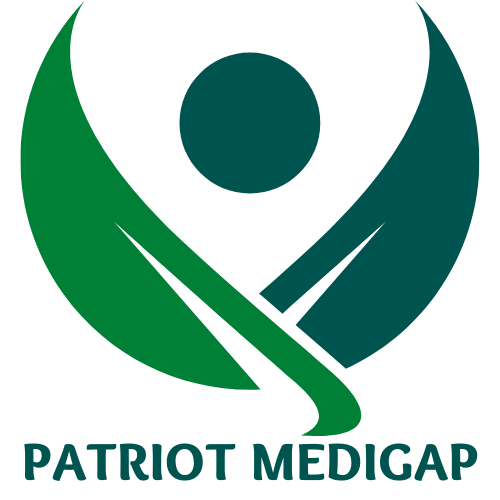Medicare Part D
Medicare Part D is a federal program that provides coverage for prescription medications. It’s an optional benefit that individuals can enroll in if they have Medicare Part A and/or Part B.
Part D Eligibility and Coverage
Eligibility
Individuals enrolled in Medicare Part A and/or Part B are eligible to enroll in a Medicare Part D plan. This type of Medicare coverage is only available through private plans which you should seriously consider enrolling in case you don’t have any other type of creditable drug coverage.
Coverage
Medicare Part D plans cover prescription drugs and function on the principle of drug tiers. Part D plans have a list of covered drugs, called a formulary, and often offer a variety of options with different costs, deductibles, and copays. Enrollment in Part D is not mandatory, but if you do not enroll when you are first eligible and later decide to enroll, you may have to pay a late enrollment penalty. The exact coverage varies from plan to plan.
Cost
Medicare Part D plans have a monthly premium, and may also have deductibles.
Once the deductible has been met, beneficiaries typically enter the “initial coverage period” during which they pay a copayment or coinsurance for their medications. After the initial coverage period, beneficiaries may enter the “coverage gap,” also known as the “doughnut hole,” during which they may be responsible for paying a larger share of their drug costs.
Finally, after a certain level of spending, beneficiaries enter the “catastrophic coverage period,” during which their out-of-pocket costs for drugs are capped.
It’s important to note that the specific costs and coverage details of a Part D plan can vary widely, so beneficiaries should carefully review the plan’s Summary of Benefits and Coverage before enrolling.
Enrollment
Individuals must choose to enroll in a Medicare Part D plan during the Annual Enrollment Period (AEP), which runs from October 15th to December 7th each year.
How it Works
Medicare Part D is a federal program that provides prescription drug coverage to Medicare beneficiaries. It is optional, meaning that beneficiaries can choose to enroll in a Part D plan or not. The plans are offered by private insurance companies that contract with Medicare.
To enroll in a Part D plan, a beneficiary must have Medicare Part A (hospital insurance) and/or Part B (medical insurance) and pay a monthly premium for the Part D coverage. The plan chosen determines the specific drugs that are covered, as well as the cost-sharing amounts (e.g. deductibles, copayments, coinsurance) for those drugs.
There are two main phases to the coverage provided by a Part D plan: the initial deductible phase and the coverage gap (also known as the “donut hole”). During the initial deductible phase, a beneficiary pays the full cost of their drugs until they have spent a certain amount (which may vary by plan), after which they enter the coverage gap. During the coverage gap, beneficiaries receive a discount on their drugs, but they still pay a portion of the cost. Once they have reached the out-of-pocket threshold for the year, they enter the catastrophic coverage phase, where they only pay a small co-payment or co-insurance for the rest of the year.
Overall, Medicare Part D helps beneficiaries access the prescription drugs they need, but it is important for them to choose a plan that covers the drugs they take and fits their budget.


Benefits
Medicare Part D provides coverage for prescription drugs, which can be a significant cost for many individuals. Enrolling in a Medicare Part D plan can help individuals manage their out-of-pocket expenses for prescription drugs. We will now give you some insight into the pros and cons of Medicare Part D.
Pros of Medicare Part D
- Access to prescription drugs: Medicare Part D provides beneficiaries with access to prescription drugs that they might not otherwise be able to afford.
- Wide range of plans: Medicare Part D offers a wide range of plans, so beneficiaries can choose the one that best fits their needs and budget.
- Low-income subsidies: Medicare Part D offers low-income subsidies for those who meet certain financial criteria, which can help make their coverage more affordable.
- Protection against high drug costs: Part D has a coverage gap (known as the “donut hole”) where beneficiaries may temporarily have to pay more for their drugs. However, the Affordable Care Act has gradually closed the donut hole and beneficiaries now pay less for their medications in this coverage gap.
- Coverage for all: Part D is available to all individuals enrolled in Medicare, regardless of income or health status.
- Convenient coverage: Part D is a standalone plan that can be added to the original Medicare or included in a Medicare Advantage plan.
Cons of Medicare Part D
- Premium costs: While some beneficiaries may have low monthly premiums, others may find the costs to be high, especially if they have multiple chronic conditions.
- Coverage gaps: Some Medicare Part D plans have coverage gaps, also known as the “donut hole,” which can result in beneficiaries having to pay more out of pocket for their drugs.
- Limited formulary: Medicare Part D plans have limited formularies, or lists of covered drugs, which may not include certain drugs that a beneficiary needs.
- Complexity: The process of enrolling in and using Medicare Part D can be confusing and complicated, making it difficult for some beneficiaries to navigate.
As you can see, Medicare Part D offers beneficiaries access to prescription drugs, but it also comes with some challenges, such as the potential for high costs and coverage gaps, as well as the complexity of the program. Nevertheless, it is a valuable and popular option among Medicare beneficiaries.
Medicare Part D Drug Tier System
The Medicare Part D drug tier system is a way for Medicare to categorize different prescription drugs into different cost levels. The goal of the tier system is to provide beneficiaries with a better understanding of their out-of-pocket costs for each medication and to encourage the use of lower-cost, clinically appropriate drugs.
The tiers typically range from 1 to 5, with the lower tiers representing lower-cost drugs and the higher tiers representing higher-cost drugs. Here’s a general overview of the different tiers:
- Tier 1: Generic drugs with the lowest cost-sharing requirements.
- Tier 2: Preferred brand-name drugs, which have a slightly higher cost-sharing than generic drugs.
- Tier 3: Non-preferred brand-name drugs, which have a higher cost-sharing than preferred brand-name drugs.
- Tier 4: Specialty drugs, which are usually high-cost drugs used to treat complex or rare medical conditions.
- Tier 5: Non-formulary drugs, which are drugs that are not on a particular plan’s list of covered drugs.
It’s important to note that different Part D plans, provided by various private insurance companies, may have different tier systems and cost-sharing requirements, so beneficiaries should carefully review their plan’s formulary to understand their costs for each medication.
Additionally, beneficiaries should discuss their drug options with their healthcare provider to determine the most appropriate and cost-effective medication for their individual needs.
Conclusion
In conclusion, Medicare Part D is a valuable benefit for individuals enrolled in Medicare who require prescription drug coverage. It provides access to a wide range of prescription drugs, helps lower out-of-pocket costs, protects against high drug costs, is available to all individuals enrolled in Medicare, and offers a choice of plans. The gradual closing of the coverage gap has also made it easier for beneficiaries to access their medications without financial strain. Overall, Medicare Part D plays a crucial role in ensuring that individuals on Medicare have access to the medications they need to maintain their health and well-being.
